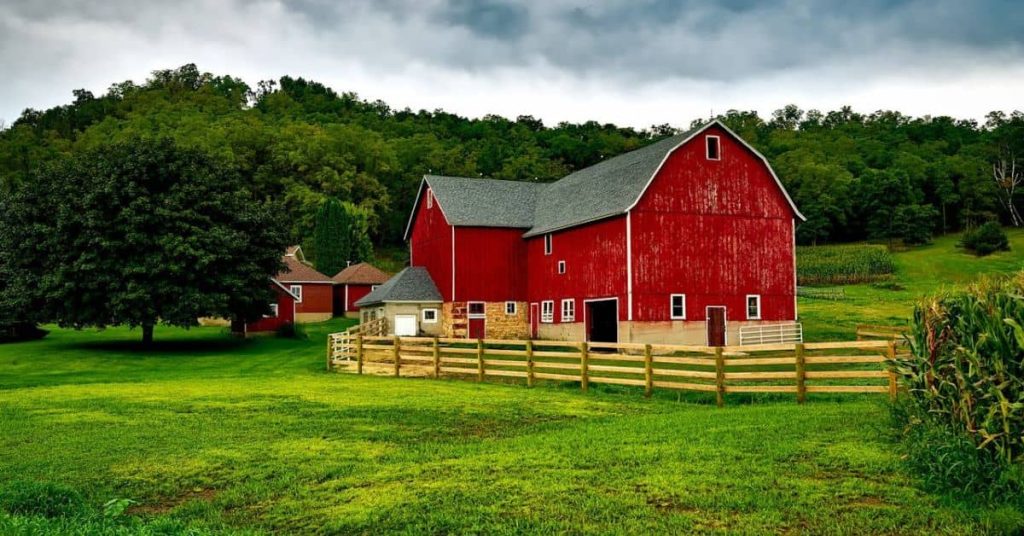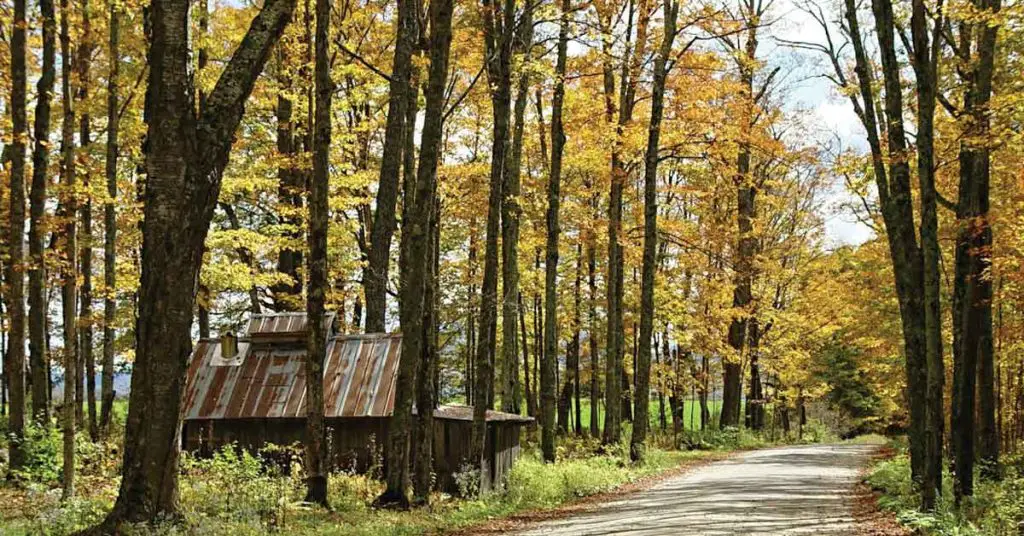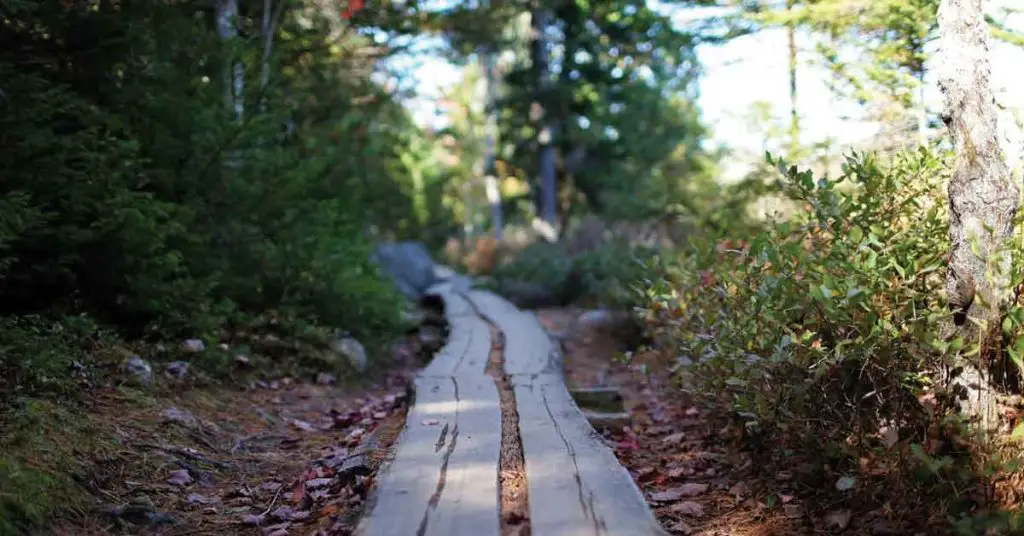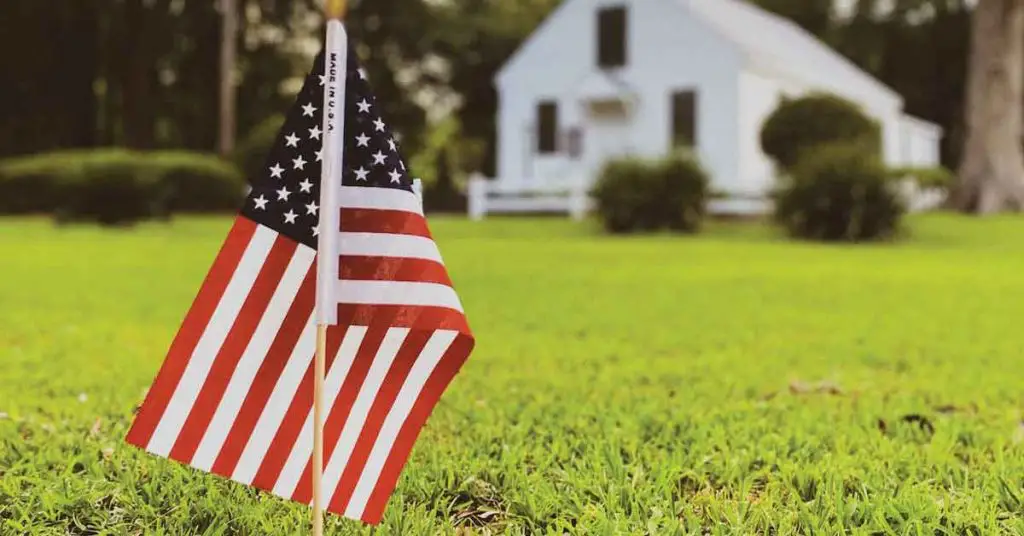Homesteading in Wisconsin can feel like a tall order, especially when the thermometer drops to fifteen below before sunrise.
I still laugh at the morning our backup propane tank froze solid and I had to heat coffee over a wood-stove ember while stomping my boots to keep feeling in my toes. By noon the kids were sledding off the hay bales, and the chickens never missed a beat, but I learned fast that winter prep isn’t optional here.
After 10 winters in Texas followed by five in the Upper Midwest, I’ve made every cold-weather mistake once and figured out the work-arounds so you don’t have to.
Stick around and you’ll leave with a clear, step-by-step game plan for buying land, meeting state rules, and keeping your water lines and fingers thaw-free all season long. Think of this guide as the neighborly chat I wish someone had given me that first frozen morning.
If you’re short on time and looking for quick answers, jump into our FAQ section to learn more, but I encourage you to read through the entire article, as I’m sure you won’t be disappointed.
Is Wisconsin a Good State for Homesteading?
Yes, if you can handle winter. Wisconsin’s zone-4 climate supports hardy crops, land is still affordable outside metro areas, and water is plentiful, but plan for deep frost, heavy snow, and spring mud.
Wisconsin Homesteading Climate Zones (4a–5b)
Most of the state sits in USDA zones 4a–5b, meaning winter lows dip to –30 °F. Summers, though, are warm enough for sweet corn, squash, and pasture grass. That balance lets you raise cool-season veggies and hardy livestock without the blistering droughts common farther west.
Resource: USDA Plant Hardiness Zone Map
Pros and Cons of Homesteading in Wisconsin
Cold snaps build resilience fast, but they also shape daily chores. Snow load pushes you to over-engineer roofs, and the freeze-thaw cycle can burst a water line you thought was buried deep enough.
What worked for me after leaving Texas was treating every pipe and roof truss like it lives in Alaska, even if the calendar says April.
Actionable Steps Before You Commit
- Walk the land in late March to see where meltwater pools.
- Budget for R-value upgrades on well houses and pump sheds.
- Dig trenches at least 4 ft deep for water lines; deeper in the Northwoods.
- Check county zoning for livestock limits, many allow goats on lots under 3 acres.
- Ask sellers for the last three years of propane or wood-cord receipts.
- Test well water for nitrates and this year especially, PFAS.
- Price out a backup heat source; wood, pellets, or kerosene all work when propane stalls.
Cold nights can be rough, but the payoff is real: crisp lettuce in June, reliable groundwater, and neighbors who loan you a chainsaw when the first ice storm drops a maple across the drive.
If you’re drawn to wide skies, honest work, and the promise of a cellar full of potatoes that never sprout mid-winter, homesteading in Wisconsin is not just doable, it’s downright satisfying once you plan for the frost.
How Do You Qualify for a Homestead in Wisconsin?

You qualify by being at least 18, a full-year Wisconsin resident, not listed as someone else’s dependent, and by paying property tax or rent on your main home while keeping household income under roughly $25k.
Homesteading in Wisconsin often starts with the state’s Homestead Credit, a tax refund that can cover a load of fence posts if you play it right. I nearly missed it my first year because the rules sounded like pure legalese. What worked for me was printing the checklist, taping it to the fridge, and tackling one line a night after chores.
- Be at least 18 and a Wisconsin resident all year.
- Live in and own or rent the home for the entire tax year.
- Don’t let anyone claim you as a dependent.
- Keep household income below $24,680 for 2024 filings.
- Pay 2024 property taxes or secure a signed rent certificate.
- File Schedule H or H-EZ with Form 1 by April 15 (electronic or paper).
- Wisconsin Department of Revenue
Those six steps move you from “maybe” to money in the mailbox. Print the Schedule H packet early so you’re not digging through boxes for W-2s when planting season steals your evenings.
How Many Acres Do You Need for a Homestead Here?
County zoning drives the official answer, not the state. In practice, I’ve seen neighbors raise three dairy goats, a garden, and fruit trees on two acres just outside La Crosse. They haul in hay but save on taxes. Down the road, a family on forty acres qualifies for ag-use tax rates, grows feed corn, and rotates cattle through silvopasture. If livestock is your dream, call the county clerk to learn minimum-lot sizes and fencing ordinances before you sign a deed. Either way, plan space for access roads, snow piles, and a future greenhouse, you’ll thank yourself the first time the plow berm blocks the lane.
Average Cost per Acre to Buy Farmland in Wisconsin
Expect $4,000 – $8,000 per acre in 2025, with cheaper woods up north and premium dairy ground in the east.
Wisconsin Farmland Price Ranges (Driftless, Northwoods, Dairy Belt)
Prices swing by soil and zip code. The University of Wisconsin Extension tallied the 2024 statewide average at $6,363 per acre, up seven percent from 2023. In my scouting this spring:
- Driftless Region: $7,000–$9,500 / acre for ridge-top loam.
- Northwoods: $3,200–$5,000 / acre for sandy or forested parcels.
- Dairy Belt (east-central): $8,000–$12,000 / acre near processing plants.
What worked for me was budgeting on the high end, then celebrating when I landed a mid-range parcel instead of scrambling for extra cash at closing.
Resource: Wisconsin Agricultural Land Prices
Where to Find Homestead Land for Sale in Wisconsin
Scrolling listings only gets you so far. Kick the tires, literally, and follow this trail:
- Filter LandSearch for “5–20 acres, unrestricted,” then set an email alert.
- Check county tax-deed auctions each January; parcels sometimes start at back-tax value.
- Call local ag lenders; they often know about quiet, soon-to-list farms.
- Walk the lot after heavy rain to spot drainage problems.
- Pull a free USGS well-log to confirm depth and flow.
- Run a soil test before you offer; a $20 kit saves thousands in amendments.
- Measure rooflines: snow load in Vilas County can top 60 lb / sq ft.
A site visit in March taught me more than a dozen online photos. Meltwater revealed a hidden spring that now feeds our gravity-flow livestock tank, something the realtor never mentioned.
USDA Micro-Loan Tip: New growers can borrow up to $50,000 for land through the FSA’s Direct Farm Ownership “Down Payment” program, often with lower rates than a rural bank. Pair that with a local credit union mortgage and you’ll keep more savings for fencing and seed.
By combining hard numbers with boot-on-ground scouting, you can snag homestead land for sale in Wisconsin that fits both your budget and your long-term plans, without sticker shock come closing day.
Can You Claim Land in Wisconsin? Squatter Myths vs. Reality

Only after 20 years of open, continuous possession, and never on state-owned parcels, can someone legally claim land in Wisconsin.
Adverse Possession Basics in Wisconsin
Folks online love the idea of “free” land, but the law makes it tough. Wisconsin’s adverse-possession statute says you must occupy the property openly, exclusively, and without the owner’s permission for 20 straight years. Miss one tax bill or let the owner grant you written permission and the clock resets. What worked for me when fencing a disputed half-acre was to keep dated photos and witness statements; clear evidence stops neighbor feuds before they turn legal.
Resource: Wisconsin Legislative Documents
Tax-Delinquent Auction Strategy
If you really want cheap acreage, buy it, don’t try to squat. Counties foreclose on tax-delinquent parcels every year and auction them off, sometimes for little more than the back taxes. The trick is staying ahead of the notices and doing your homework before the gavel drops.
Actionable Steps
- Sign up for your county treasurer’s email alerts and check the state DOR auction calendar each month.
- Drive by the parcel; look for buried power lines, easements, and junk piles that photos hide.
- Pull the legal description and compare it to the fence lines, surprises cost money.
- Budget extra for unpaid utility liens; they don’t always disappear at sale.
- Order a title search or do it at the courthouse to spot mortgages that survived foreclosure.
- Walk the land with a soil probe; marshy ground is cheap for a reason.
- Set a hard bid cap and bring a cashier’s check, the auctioneer won’t wait while you think.
Claiming land through occupancy is a long shot for homesteading in Wisconsin. Buying tax-deed property puts you on firmer footing and lets you start planting next spring instead of counting down twenty winters in someone else’s woods.
Is Living Off-Grid Even Legal in Wisconsin?
Yes, but you must follow county septic codes, pull permits for solar arrays, and respect food-safety rules like the Pickle Bill.
Living off the grid sounds romantic until paperwork piles up. Wisconsin is lenient enough for most homesteaders, yet every county asks for proof that your waste, water, and watts won’t harm the neighbors. What worked for me was keeping one binder labeled Permits & Proof; when an inspector stopped by I could flip straight to the page he needed.
Off-Grid Basics: Septic, Solar, Rain Catchment
- Call the county sanitarian first; many require engineered septic or a certified composting toilet.
- Bury water lines below local frost depth (often 48 in. or more).
- File a simple plumbing plan with DSPS if you install grey-water reuse.
- Submit a one-page electrical affidavit before setting a ground-mount solar rack.
- Size battery banks so you stay under 20 kW, larger systems trigger extra reviews.
- Add a first-flush diverter to rain barrels; inspectors spot those fast.
- Selling jam at market? Follow DATCP’s “pickle bill” limits on high-acid foods.
Resource: Canned Foods – DATCP
Changing Solar Rules: 2025 Bills Could Complicate Off-Grid Permits
Two bills in Madison are tugging counties in opposite directions. AB 174 would let the Public Service Commission override town vetoes on big solar farms. A rival bill caps array size without a new town vote. Until lawmakers settle it, several counties have quietly raised rear-lot setbacks from 15 ft to 30 ft and now want stamped load-calculations on ground racks. Factor that in before you order panels.
Another wrinkle: the federal residential solar credit drops from 30 % to 26 % after December 31, 2025. File your permit early so you can install and claim the full credit before the snow flies.
Off-grid life here is legal and satisfying if you tackle permits up front. Keep the rules in your favor, and you’ll spend more time tending tomatoes than chasing signatures.
What Grows Best in Zone 4 Wisconsin (and When to Plant)
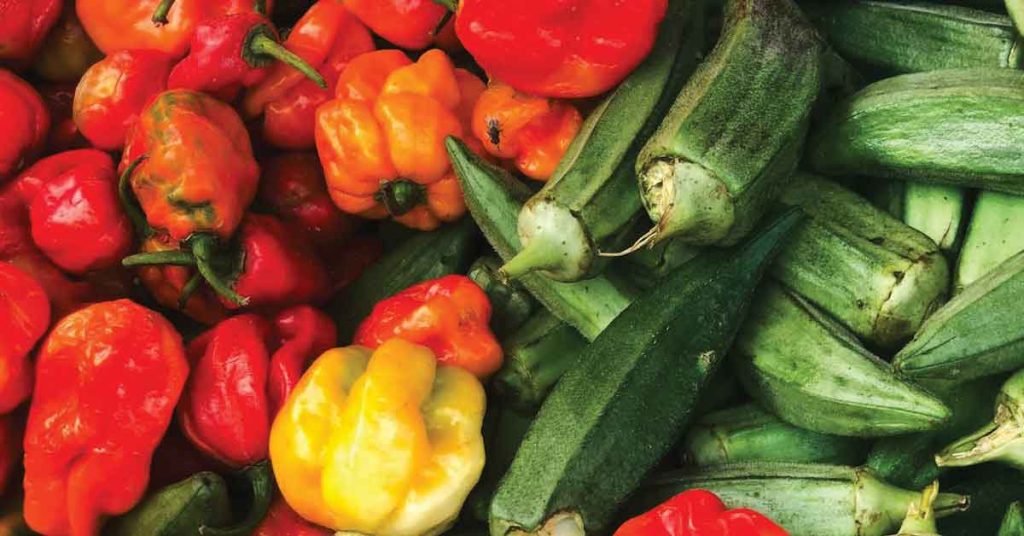
Peas, kale, potatoes, and cool-season brassicas thrive; wait until soil tops 60 °F for tomatoes and squash, and lean on cold frames to keep salad greens alive into November.
Early on in my homesteading in Wisconsin journey I lost half a bed of broccoli by guessing planting dates. What worked for me was taping a simple month-to-month chart to the seed cabinet and checking it every Sunday.
Month-by-Month Planting Guide
Homesteading in Wisconsin means riding a tight 110-day frost window. What worked for me was pinning a simple calendar above the seed rack and checking it every Sunday.
- April 1–20: peas, spinach, radishes once soil hits 45 °F
- May 10–20: transplant cabbage and broccoli; sow carrots
- Late May: corn, beans, squash after nights stay above 50 °F
- June 1–10: tomatoes, peppers, sweet potatoes
- July 15: second planting of bush beans; start fall brassicas indoors
- August 1–15: direct-seed kale and turnips; move broccoli starts outside
- September: plant garlic and winter rye before first frost
Using the USDA Web Soil Survey Before You Buy
Knowing what crops grow best in zone 4 Wisconsin starts with knowing your dirt. The USDA Web Soil Survey lets you draw an “Area of Interest,” click Soil Data Explorer, and pull free maps on drainage and organic matter. Five minutes online can save you from buying thin sand that burns up lettuce.
Resource: Natural Resources Conservation Service
PFAS in Your Well? 2025 Grant Money and Quick DIY Tests
The DNR’s ARPA Well Compensation Program offers up to $16,000 per household to fix or replace contaminated wells, applications close August 2025 or when funds run dry. A $16 countertop test kit gives you results in two days; you’ll need that lab slip for the grant paperwork.
Resource: American Rescue Plan Act of 2021 (ARPA) | Wisconsin DNR
Actionable Steps
- Print this planting chart and pin it by the seed rack.
- Pull a Web Soil Survey map before you schedule a showing on any rural parcel.
- Probe soil depth with a rebar rod; six inches of loam beats twelve of sand.
- Build a 2×4 cold frame and vent it daily once inside temps top 80 °F.
- Order PFAS test kits in spring; mail samples before peak shipping heat.
- If levels exceed state guidelines, file the online DNR eligibility form the same week.
- Budget one weekend to install a simple activated-carbon filter while the grant is pending.
Master these steps and you’ll plant on time, buy land that feeds your crops, and sip water you trust, all key ingredients for a thriving Wisconsin homestead.
Hands-On Training & Grants for First-Time Farmers
Start with UW-Extension short courses, then tap USDA FSA loans and state grants; together they can cover land, equipment, and business skills for new Wisconsin growers.
Stepping into homesteading in Wisconsin can feel pricey until you learn how many programs are built for greenhorns. What worked for me was stacking one winter classroom course on top of a spring field day, then using those completion certificates to strengthen my micro-loan application.
Where the Money and Mentors Hide
Wisconsin farmland grants for first-time farmers come from three main buckets: university Extension, federal loans, and state agriculture funds. UW-Madison Extension runs evening workshops on budgeting, grazing, and produce safety. The USDA Farm Service Agency (FSA) offers low-interest Direct Farm Ownership loans, up to $600,000 at 1.5 % below market rates, for beginners who have logged just three years of experience. Meanwhile, DATCP’s Buy Local Buy Wisconsin grant reimburses marketing costs for small farms breaking into nearby markets.
Resource: Beginning Farmer Training & Education Programs
Actionable Steps
- Pick one UW-Extension course that matches your crop or livestock plans.
- Gather three years of records (even part-time) to prove “beginning farmer” status for FSA.
- Download the FSA loan worksheet and fill it out before your first office visit.
- Set Google Alerts for “DATCP grants” so new rounds don’t slip past.
- Network at county pasture walks; lenders like to see local mentors on your team.
- Request a loan eligibility letter early; it strengthens private-bank applications too.
- Block one Sunday to draft the grant budget; clear numbers beat big dreams every time.
Solid training shows lenders you can turn acreage into income, while grants plug holes in the budget, logo design, hoop-house plastic, or that used walk-behind tiller you’ve been eyeing. Stack the resources, keep every receipt in a labeled folder, and you’ll launch your farm with more know-how and less debt than most folks think possible.
Gearing Up: Must-Have Tools (and a Few Craigslist Gems)

Start with a snow blower, heated waterers, hoop-house plastic, and a reliable 40-hp used tractor, then hunt winter auctions for bargains.
The first January I spent homesteading in Wisconsin, our little walk-behind tiller quit under crusted snow, leaving me shoveling paths by hand. What worked for me was upgrading core tools one at a time, always buying in the off-season when prices dip.
Used Tractor for a Small Wisconsin Farm
A 35- to 50-horsepower diesel handles plowing, mowing, and feed runs without guzzling fuel. Good units run $6,000–$12,000 if you’re patient.
Actionable Steps
- Scan Craigslist and Facebook Marketplace weekly; save searches for “40 hp diesel” and “loader.”
- Check hour meters, service logs, and engine compression before you bid.
- Ask the seller to lift a bucket of gravel, sloppy hydraulics scream expensive repairs.
- Attend February consignment auctions when big dairies off-load extra tractors.
- Bring a friend who owns a trailer; rental flatbeds book fast on sale day.
- Budget 15 % of purchase price for filters, hoses, and a block-heater install.
- Store manuals and parts numbers in a labeled binder for quick winter fixes.
Round out the kit with a snow blower sized to your tractor’s PTO, heated waterers to keep stock from licking ice, and 6-mil hoop-house plastic so spinach pushes through spring chills. These pieces let you push feed, clear drives, and harvest greens when neighbors are still seed-shopping.
For deeper guidance on spotting wear spots, gearbox play, cracked welds, download the University of Wisconsin Extension’s checklist on buying used equipment.
Farm Management
Gear up smart now and you’ll spend next January sipping coffee while the tractor clears drifts, not cursing a frozen shovel handle.
Avian Flu Update: Simple Bio-Security After the 2025 Spring Fair Outbreaks
Wash boots, keep visitors out of the coop, quarantine new birds 30 days, and call DATCP for free testing if any hen looks off.
Keeping poultry healthy while homesteading in Wisconsin got trickier after this spring’s fairs, when H5N1 popped up in backyard flocks across the state. My first line of defense was a plain five-gallon “boot-bath” bucket at the coop door, cheap disinfectant, no fancy mats. What worked for me was making the kids step in the solution every single time, even on sunny days, until it became muscle memory.
State vets are clear: separate new birds from the old crew for a full month and tighten pen access until the fall migration quiets down. They’ll even test suspect birds for free if you ring the hotline, so there’s no excuse to guess about a sudden die-off.
Actionable Steps
- Mix one cup bleach in five gallons of water for a boot-bath; change it every two days.
- Station hand sanitizer at the gate and make visitors use it before touching birds.
- Quarantine all new or returning poultry for 30 days in a separate pen.
- Skip swap meets and live-bird markets for at least 30 days after any local outbreak.
- Call DATCP at (608) 224-4872 for no-cost lab testing if you see sudden deaths or drop in eggs.
- Register your premises online so control-zone alerts hit your inbox fast.
- Keep feed in covered bins to deter wild waterfowl that might carry the virus.
- A little routine beats a lot of regret. Once our family stuck to these habits, we quit losing sleep over every sneeze in the henhouse and got back to collecting eggs, confident we’d done our part to keep the flock, and the neighborhood, safe.
Real-Life Budget: Our First-Year Costs & Surprises

Plan on $8–10 k for year-one basics, fencing, seeds, insulation, and a winter fuel stash, then add 15 % for the “oops” fund.
The first spring of homesteading in Wisconsin, I thought my savings could float everything. By November the pump-house froze and a surprise propane run ate the last of our grocery envelope. What worked for me was building a written, line-item budget and tacking it to the fridge so every purchase stayed visible.
Here’s what our real ledger looked like:
- $3,300: perimeter fencing (T-posts, woven wire, gates)
- $ 600: vegetable seed, berry starts, and soil blocks
- $1,200: R-21 batts to wrap the pump-house and attic crawlspaces
- $ 900: emergency fuel: one 250-gal propane fill + 30 gal diesel for the tractor
- $ 750: used chest freezer and spare parts
- $ 450: livestock permits, vet visit, and initial vaccines
- $ 400: odds and ends: hoses, frost-proof spigots, heavy-duty gloves
Total: $7,600, then winter threw in another $1,200 of fixes I hadn’t planned, proving the value of that 15 % buffer.
Actionable Steps
- Price fencing in February; steel posts jump once haying season starts.
- Track every receipt in a single spreadsheet before numbers blur.
- Add a 15 % contingency line, treat it as untouchable until an emergency hits.
- Review USDA NRCS “Payment Schedules” for cost-share rates on practices like high-tunnels or livestock waterers; free money fills budget gaps.
- Natural Resources Conservation Service
- Split major buys: pay half now, half after harvest to match cash flow.
- Keep one month of living expenses separate so feed bills never raid the pantry.
- Post your own totals in the comment section, shared numbers help the next neighbor plan better.
Facing the costs head-on, instead of guessing, let us enter year two with cash in the bank and fewer midnight surprises. Drop your figures below so we can all fine-tune the true price of starting fresh in Wisconsin.
Grab a Thermos and Let’s Keep Chatting
Winter’s frozen propane lines and surprise feed bills remind us that homesteading in Wisconsin isn’t all meadow strolls; the learning curve can sting. Still, every problem, from stretching a boot-bath budget to harvesting spinach in November, proves that good planning beats tough weather.
Take heart: with clear steps from Is Wisconsin a Good State for Homesteading? and crop timing tips in What Grows Best in Zone 4 Wisconsin, you’re already miles ahead of where many of us started. The payoff is pure, the first egg on a snowy morning, a pantry shelf you filled yourself.
Now it’s your turn. Drop a comment with your biggest first-year surprise or money-saving hack, and let’s build a neighborly knowledge base. If the chat helps, hop on the newsletter so fresh tips land in your inbox before the next cold snap.
FAQ
Do you need a special permit to keep backyard chickens in Wisconsin towns?
Most cities require a simple $25–$50 “urban poultry” license and neighbor consent, but unincorporated areas usually don’t, call your county zoning office first.
Can you heat your homestead solely with firewood from state forests?
Yes, if you buy a $5–$20 Wisconsin DNR firewood permit and cut only in the designated areas; hauling untreated wood across county lines is restricted to stop invasive pests.
Is it legal to sell raw milk from your family cow?
Not directly; Wisconsin allows raw-milk sales only to licensed processors, so you’ll need a Grade A dairy permit or stick to “incidental” on-farm consumption.
How long can property taxes stay unpaid before the county takes my land?
Counties may start tax-deed proceedings after two years of delinquency, but you can redeem the property by paying back taxes, interest, and fees anytime before the final foreclosure date.
Disclaimer: The information provided in this article is for general informational purposes only and is not intended to be a substitute for professional advice. The author of this article does not claim to be an expert in homesteading and the information provided should not be relied upon to make decisions about your own homesteading journey. Please do your own research and consult with a qualified professional before making any decisions about your homestead.
Share via:
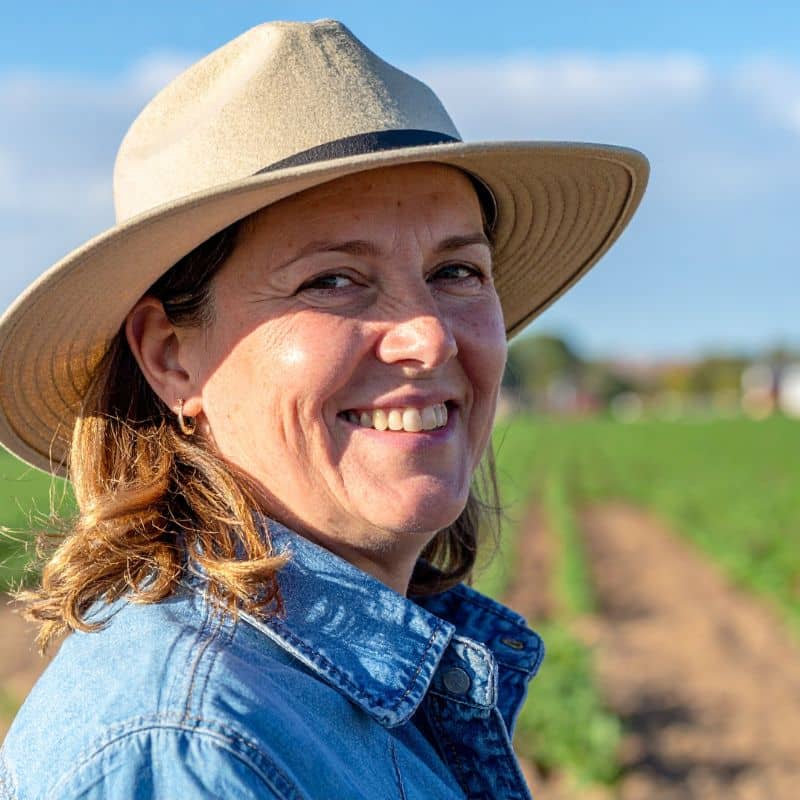
Co-Founder at Homesteading Simple | Horticulture & Sustainable Living Educator | 25 Years in Practical Homesteading

